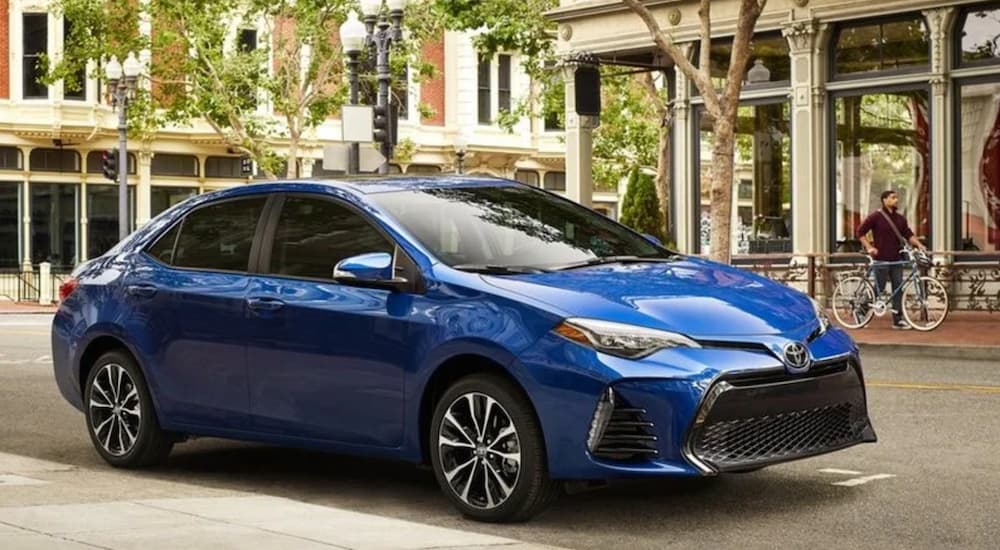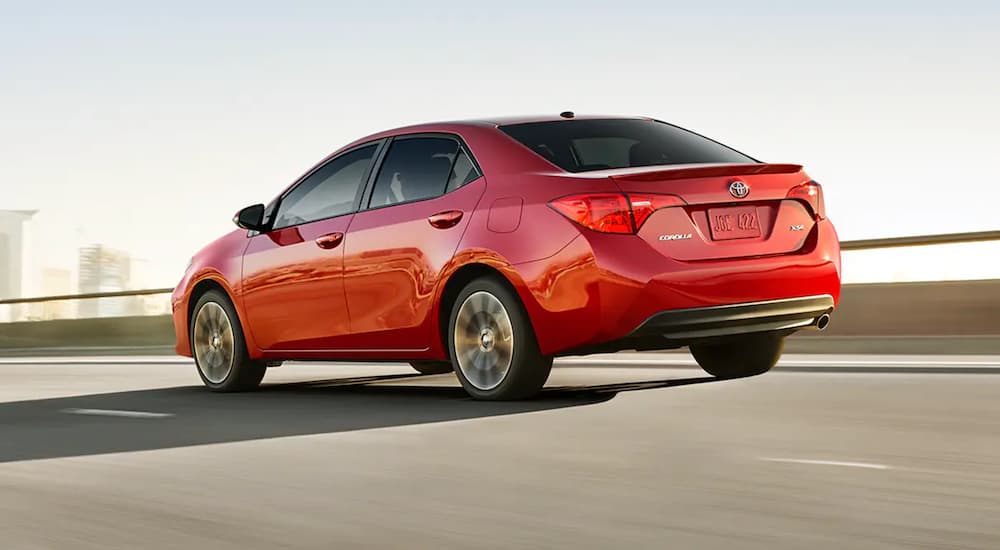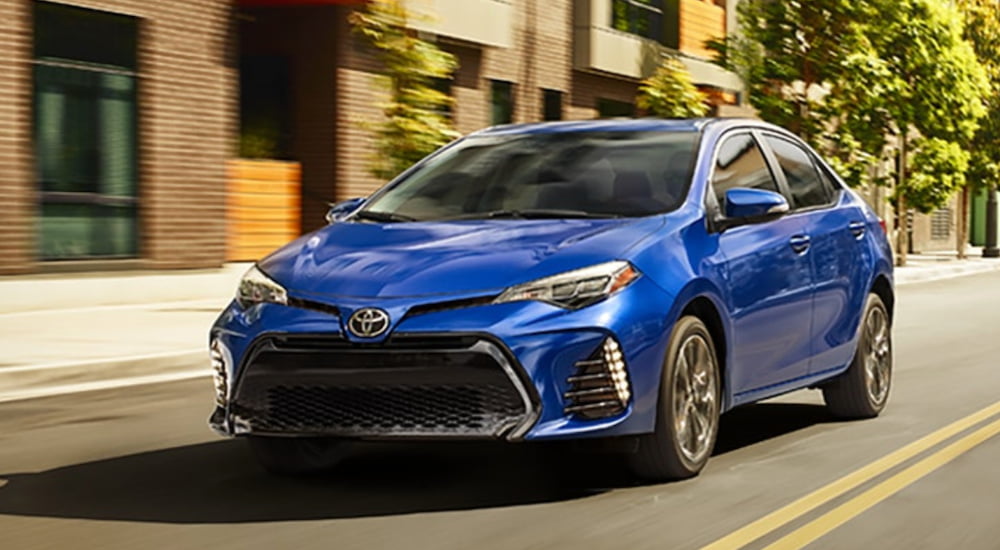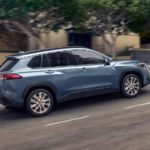If there’s one thing consumers are always wary of, it’s the never-ending fluctuation of gas prices. Pulling up to the pump only to see that the gallon cost has increased by a few cents is enough to cause aggravation. Now, imagine going for your weekly fill-up, only to see that no gas was available or there was a line of vehicles circling the block, meaning a waiting time that would further hinder your travel plans. If this seems impossible to fathom, you can rest assured that this was precisely the case with what many drivers had to deal with during the energy crisis of the 1970s.
Commuters searching for economical transportation found their solution to this matter the same way that many modern drivers do today: by purchasing a Toyota Corolla for sale. Regarded by many as one of the most practical and economical solutions for the modern driver, the Corolla, which first debuted in 1966, came to the rescue of American drivers who needed economical transportation and an alternative to the large vehicles coming out of Detroit.
A Tale of Two Economies
When we look back in history at some of the larger vehicles that dominated the American automotive market in the 1950s and 60s, we have the advantage of viewing these designs with hindsight and noticing just how impractical they must have been. These designs, while certainly ostentatious with either enormous powertrains or, in the case of the Cadillac, adorned with chrome accents and tail fins, were the product of an economic boom period following the end of the Second World War.
Prosperity saw the expansion of more highways and an abundance of consumer goods. Thanks to the mass production that had been effective during wartime and these means of production shifting to domestic purposes, more cars were being produced than ever. Larger vehicles soon became a symbol of status, not too different from the early days of the SUV boom, when models such as the Escalade and Excursion were considered the creme-de-la-creme and the prime example of many designs that emphasized “bigger being better.”
To fully understand the full scope of the energy crisis that would take place in 1973, a brief lesson in global politics has to be introduced into the fold. Much of the oil that was being exported to the United States at the time came from the Middle East and was organized by a committee known as OAPEC (Organization of Arab Petroleum Exporting Countries). In 1973, an armed conflict, now referred to as the Yom Kippur War, erupted between Egypt and Syria allied against Israel. OAPEC issued an embargo to many countries that had supported Israel in this conflict, which included the United States. The Impact would be catastrophic, with the price of oil going from less than $30 a barrel in 1970 to $140 by the end of the decade when adjusting for inflation.
The fallout from such a large increase in price led to shortages and a need for a more economical vehicle that could offer superior fuel economy to what many of the domestic manufacturers were offering at the time. Enter the Toyota Corolla.
The Toyota Corolla Comes to the Rescue
The Toyota Corolla, which had been in production since 1966, was the antithesis of many other sedans and muscle cars that Chevy and Ford were manufacturing. The Corolla hit North American shores in 1968, a few years before the crisis had officially begun. As was the case with other notable American sedans at the time, such as the Chevy Malibu or Nova, the Corolla came in a variety of different variations. Drivers could choose between either a two or four-door sedan, a fastback version of the Corolla known as a Sprinter, and even a station wagon. In an age where the V6 and V8 were the most commonly used engines, Toyota relied on a scaled-down powertrain to offer substantial fuel economy. The 1968 Corolla came with either a 1.1L or 1.2L four-cylinder engine.
It didn’t take long for the Corolla to establish itself as the ideal alternative to the domestic brands, and in 1970, the Corolla became the second most popular imported car in the US, with the highly popular Volkswagen Beetle leading the way for many years.
Impressive by Today’s Standards
One of the advantages that the modern consumer has when it comes to what they drive is the yearly information offered by the EPA to disclose fuel economy rankings. This transparent oversight allows many to determine which vehicles are ideal for their commute. When the energy crisis hit in 1973, the EPA had been testing fuel economy for two years, and the results of the 1973 Toyota Corolla were far and away more efficient than the offerings being built by domestic manufacturers.
Domestic models such as the Lincoln Continental offered drivers 7 MPG, and the Corolla offered an impressive 37.3 MPG. Even by today’s standards, with hybrid and PHEV models offering impressive rankings to consumers, the Corolla was far ahead of its time in being a vehicle that catered to the needs of consumers who were far more interested in going longer distances for less instead of having something big and bold and had a stronger emphasis on style than substance.
The global impact of the energy crisis saw higher fuel prices across the board and decreased sales among many manufacturers worldwide. With the Toyota Corolla offering consumers a means to save big on fuel costs, record sales of well over 200,000 units in the US alone would help pave the way for the Corolla to become the gold standard for what economical sedans should be. The rest of the decade would see an increase year by year, with millions of Corolla models taking to the streets and providing American drivers with a means of transportation that continues to rival any other regarding fuel economy.
Still a Shining Example of Efficiency After All These Years
There’s something to be said about a brand that can not only adapt to consumer needs in a time of crisis but also sustain itself as the years progress. Toyota embodies both of these aspects and will continue to do so for many years. For drivers who were around at the time of the energy crisis, the Toyota Corolla was much more than just a vehicle; it was a means to shift the paradigm of what the modern sedan could offer.
In an age where domestic brands refused to waver from designs that were meant to impress with overbearing size and performance, Toyota recognized the essential need for the average driver to have a vehicle that embodies a discernible amount of style while also providing exceptional fuel economy. In the years since the end of the energy crisis, Toyota has only refined its designs to perfection, and now the Corolla wears the undisputed crown as the sedan that drivers trust the most to deliver on economy, practicality, and sustainability.
While the energy crisis is now in the rear-view mirror, and many vehicles are designed to offer drivers practicality to match performance, we should all hold the Corolla up as the ideal example of style and substance that was there when drivers needed it the most.






